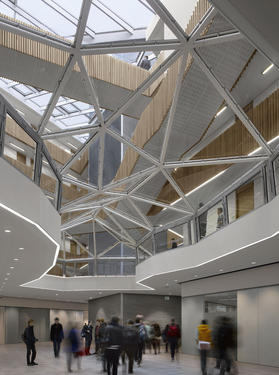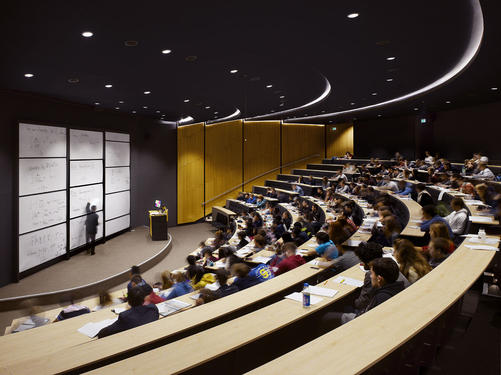Oxford Mathematics Interviews: 'Extra Time: Professor Sir Roger Penrose in conversation with Andrew Hodges.'
These two films explore the development of Sir Roger Penrose’s thought over more than 60 years, ending with his most recent theories and predictions.
In the first film, Roger Penrose explains the impact of his time at Cambridge in the 1950s. The interview brings out his highly unconventional choice of subjects for deep study, which completely ignored the boundary between ‘pure’ and ‘applied’ mathematics. Those familiar with his world-leading development of relativity theory in the 1960s may be surprised to learn how much he was influenced by quantum theory in the 1950s, and also by the early origin of his new ideas.
Roger also explains the influence of Dirac, Sciama and other leading figures of the 1950s, and goes on to characterise the emergence of twistor theory. Non-experts will be interested to hear how the ideas of his best-known work, The Emperor’s New Mind, also had an origin in this early period. He also adds fascinating detail about the psychology of mathematical discovery, explaining how he was very slow at school, needing extra time to think issues through for himself. The mystery of time, in physics and human consciousness, runs through the entire conversation, and lights up even the most technical aspects of the discussion.
In the second film, the emphasis shifts to the recent developments in Roger Penrose’s thought. He gives a very clear outline of his argument for Conformal Cyclic Cosmology as the correct description of the Big Bang. However, the conversation turns once again to the precursors of these ideas in the 1950s, with new anecdotes about Dirac and the origin of Roger Penrose’s geometrical innovations.
Bringing the discussion up to the present moment, Roger describes the impact of recent observations of primordial magnetic fields and also addresses the significance of his own predictions for the form of ‘dark matter’. And in a closing segment, the discussion turns to the current discoveries in neurology and biophysics relevant to Roger Penrose’s theory of microtubules as advanced in Shadows of the Mind. The discussion ends tantalisingly with renewed speculation on the foundations of quantum mechanics and its relation to general relativity.
Roger concludes: "to me eternity is not such a long time."









